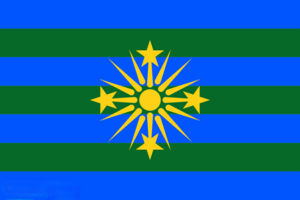Ansium, Tuujarnia: Difference between revisions
No edit summary |
No edit summary |
||
| Line 1: | Line 1: | ||
{{ | {{redirect|Ansium|the street|Edington Road|the airport|Ansium Global Airport|other uses|Ansium (disambiguation)}} | ||
{{Template:WIP}} | {{Template:WIP}} | ||
{{Infobox settlement | {{Infobox settlement | ||
| official_name =Ansium | | official_name =Ansium | ||
| native_name =Edington | |||
| settlement_type =Provincial capital | | settlement_type =Provincial capital | ||
| nickname =City of Trade, Edington | | nickname =City of Trade, Edington | ||
| image_skyline ={{multiple image | | image_skyline ={{multiple image | ||
| border =infobox | |||
| total_width=280 | |||
| image_style =border:1; | |||
| perrow =1/2/2/2 | | perrow =1/2/2/2 | ||
| caption_align =center | | caption_align =center | ||
| image1 =7b44bb82-8d53-4242-b01e-84a8c007686a-min.jpg | | image1 =7b44bb82-8d53-4242-b01e-84a8c007686a-min.jpg | ||
| caption1 =Skyline of Ansium | | caption1 =Skyline of Ansium | ||
| image2 =A640b82e-e448-41a6-862b-e70c7f45f3cb.jpg | | image2 =A640b82e-e448-41a6-862b-e70c7f45f3cb.jpg | ||
| caption2 =St. George | | caption2 =St. George Entimastal}} | ||
| image_flag =[[File:Polotno (3) result.png|frameless|center]] | | image_flag =[[File:Polotno (3) result.png|frameless|center]] | ||
| subdivision_type =Country | | subdivision_type =Country | ||
| Line 64: | Line 66: | ||
In July of 1892, Heldervinians founded a settlement at what was then called ''ignecei tomatukantus yulechcanto'' (Valley of the center of life), so named by the Mincanks. It had been a a settlement of the tribe before, which lead to conflict over rights over the territory. After three lengthy years of disputes and minor sieges, an agreement was made in which the tribe would get small parcels of land in the territory. It was subsequently named Edington, a Heldervinianized version of ''ignecei tomatukantus''. | In July of 1892, Heldervinians founded a settlement at what was then called ''ignecei tomatukantus yulechcanto'' (Valley of the center of life), so named by the Mincanks. It had been a a settlement of the tribe before, which lead to conflict over rights over the territory. After three lengthy years of disputes and minor sieges, an agreement was made in which the tribe would get small parcels of land in the territory. It was subsequently named Edington, a Heldervinianized version of ''ignecei tomatukantus''. | ||
===Expansion=== | ===Expansion=== | ||
On 27 November 1898, the Edington Railroad was built, which started in Vrebsicourg, the capital of Heldervin, and Edington. Railroad officials hoped to take part in the Great Verdelainian Migration and gain Verdelainian immigrants; the plan worked, and by 1902, the population had more than tripled from 2,706 to 9,513. It was one of the first Heldervinian towns to have a railroad leading to it, and is the only Heldervinian city that has a predominantly Verdelainian population. The discovery of a silver deposit the following year, and later in 1903 a diamond deposit, attracted thousands of miners, merchants, and | On 27 November 1898, the Edington Railroad was built, which started in Vrebsicourg, the capital of Heldervin, and ended in Edington. Railroad officials hoped to take part in the Great Verdelainian Migration and gain Verdelainian immigrants; the plan worked, and by 1902, the population had more than tripled from 2,706 to 9,513. It was one of the first Heldervinian towns to have a railroad leading to it, and is the only Heldervinian city that has a predominantly Verdelainian population. The discovery of a silver deposit the following year, and later in 1903 a diamond deposit, attracted thousands of miners, merchants, and jewelers to the already rapidly growing city. | ||
===1906-1937=== | |||
In 1906, Edington was proclaimed the provincial capital of Tuujarnia, following the separation of the role of federal capital and Tuujarnia provincial capital. The city continued to grow in population; by the turn of the decade, it had nearly 40,000 Edingtonites. To accomadate for this unprecedented growth, apartments were constructed throughout the city, which attracted more people to Edington. This led to the city becoming the pioneer of Heldervinian urbanization. In 1921, the Ansium Global Airport, then known as the Edington-Mannsteinsser Airport, was opened, contributing to the population boom. | |||
[[File:6dc072dc-4283-48a1-ae9b-a23c7326f474.jpg|thumb|left|A historic portion of Ansium from the beginning of urbanization of the city.]] | |||
In response to the rapid growth of Edington, the federal government formally incorporated Edington in 1924, separating the city from the Margerette County Area and creating Edington County. Two years later, the Tuujarnia Capitol Building was constructed in downtown Edington. The first major thoroughfare of the city, Edington Road, was constructed, which attracted numerous more immigrants. | |||
Edington became the major point of interest for immigrants. In 1931, the city acquired a quickly growing town and began urbanizing it. This began a low point in the history of Edington, as it experienced severe urban sprawl. More people continued to move in to the expanding city, increasing the need for private vehicles as apartments were built farther from shops and workplaces. | |||
===The Great Poverty=== | |||
Following the rapid expansion of the city, Edington had over 600,000 Edingtonites by 1940. However, homes and shops were growing increasingly farther from each other; this led to a need for people to have private cars, as internal public transport infrastructure did not exist. Due to the rising demand for gas, prices shot up, forcing people to either pay exorbitant amounts of helds, or stay home and have no income. The majority could not afford the former, leading to severe poverty; this stage was exaggerated by the fact that there was more demand for basic necessities. | |||
This period, named The Great Poverty, caused a complete collapse in the social order. With the poorest unable to work, they couldn't afford a home; hence, they couldn't pay the landowners, who in turn were not able to maintain apartments, leading to many homes falling into disrepair. Food prices also rose tremendously, which encouraged the growth of gangs who broke into the houses of the wealthy and farmers to steal food. | |||
Despite this, Edingtonites were unable to leave the city to find a better life; this was due to them being unable to afford such. As more and more people were unable to afford taxes, this led to the city government not having the money to repair infrastructure, and roads soon gained numerous potholes. Following the lack of immigrants from Vrebsicourg to Edington, the Edington Railroad was closed down to save money. | |||
Crime continued to grow rampant throughout the city; in 1948, the property crime rate per 1,000 citizens had risen to 147.32; oftentimes, property crimes became violent crimes after individuals refused to give up their few resources. The crime rate was able to explode due to the lack of a capable police force in the city, and Edington was ranked as the #1 most dangerous city in Heldervin. Other emergency services also became incapable, including the medical and fire departments. Health dropped severely, as not only did healthcare plummet, but people defecated on the sidewalks, where an increasing amount of Edingtonites lived. | |||
===Recovery=== | |||
The federal government of Heldervin granted the city of Edington 40 million helds to improve transportation infrastructure in 1966. A subway network was constructed that accepted passengers free of charge; this allowed people to easily travel to work. Soon, the social order was restored, and Edington flipped from a place that was consistently ranked as the worst place to live back to a safe haven for immigrants. A bus network was established in early 1973. | |||
===1974-2012=== | |||
[[Category:Cities]] | |||
Revision as of 20:20, 26 April 2024
This article is incomplete because it is pending further input from participants, or it is a work-in-progress by one author. Please comment on this article's talk page to share your input, comments and questions. Note: To contribute to this article, you may need to seek help from the author(s) of this page. |
Ansium
Edington | |
|---|---|
Provincial capital | |
Skyline of Ansium St. George Entimastal | |
| Nickname(s): City of Trade, Edington | |
| Country | Heldervin |
| Province | Tuujarnia |
| County | Ansium County Area |
| Founded | 18 July 1892 |
| Incorporated | 1 August 1924 |
| Government | |
| • Type | Council-manager |
| • Body | City Council of Ansium |
| • Mayor | Claramond Lehmann-Dreyer |
| Area | |
| • Provincial capital | 3,226.50 km2 (1,245.76 sq mi) |
| • Land | 3,139.04 km2 (1,211.99 sq mi) |
| • Water | 87.46 km2 (33.77 sq mi) 2.71% |
| • Urban | 3,798.38 km2 (1,466.56 sq mi) |
| • Metro | 4,519.83 km2 (1,745.12 sq mi) |
| • Rank | 4th in Heldervin |
| Elevation | 27 m (89 ft) |
| Population (2056 census) | |
| • Provincial capital | 12,581,959 |
| • Rank | 1st in Heldervin |
| • Density | 4,008/km2 (10,380/sq mi) |
| • Urban | 15,943,662 |
| • Urban density | 4,197/km2 (10,870/sq mi) |
| • Metro | 17,239,577 |
| • Metro density | 3,184/km2 (8,250/sq mi) |
| Demonym | Ansiumnite |
| Time zone | UTC-7:00 (Helderbu Time) |
| ZIP code | 3572, 3573, 3574, 3575, 3756 |
| Heldervinian Calling Code | 106 |
| Website | CBTC://home.ansium.city |
Ansium (/ænsiʌm/; from 1892 to 1974: Edington) is the capital city of the Heldervinian province Tuujarnia and the most populous city in Heldervin, with a population of 12,581,959 as of 2056. It is the seat of the Ansium County Area. Ansium is nicknamed the "City of Trade", thanks to the fact that it is the economic center of Heldervin as well. The city covers a land area of 3,139.04 km2 (1,211.99 sq mi). The Vrebsicourg Post ranked Ansium as the second-fastest growing city in Heldervin, after Vaalota.
Ansium was founded by Heldervinians in 1892 in a small river valley. It has been the capital city of Tuujarnia since 1906, when the role of national capital and Tuujarnia provincial capital was seperated. The city is home to the Ansium Global Airport, the largest and busiest airport in Heldervin.
History
Pre-settlement
For hundreds of years, indigenous people inhabited modern-day central Ansium and created thriving cultures. The historic Mincank tribe occupied the region long before Heldervinians arrived; the Mincank word for Edington is ignecei tomatukantus (Center of life).
In July of 1892, Heldervinians founded a settlement at what was then called ignecei tomatukantus yulechcanto (Valley of the center of life), so named by the Mincanks. It had been a a settlement of the tribe before, which lead to conflict over rights over the territory. After three lengthy years of disputes and minor sieges, an agreement was made in which the tribe would get small parcels of land in the territory. It was subsequently named Edington, a Heldervinianized version of ignecei tomatukantus.
Expansion
On 27 November 1898, the Edington Railroad was built, which started in Vrebsicourg, the capital of Heldervin, and ended in Edington. Railroad officials hoped to take part in the Great Verdelainian Migration and gain Verdelainian immigrants; the plan worked, and by 1902, the population had more than tripled from 2,706 to 9,513. It was one of the first Heldervinian towns to have a railroad leading to it, and is the only Heldervinian city that has a predominantly Verdelainian population. The discovery of a silver deposit the following year, and later in 1903 a diamond deposit, attracted thousands of miners, merchants, and jewelers to the already rapidly growing city.
1906-1937
In 1906, Edington was proclaimed the provincial capital of Tuujarnia, following the separation of the role of federal capital and Tuujarnia provincial capital. The city continued to grow in population; by the turn of the decade, it had nearly 40,000 Edingtonites. To accomadate for this unprecedented growth, apartments were constructed throughout the city, which attracted more people to Edington. This led to the city becoming the pioneer of Heldervinian urbanization. In 1921, the Ansium Global Airport, then known as the Edington-Mannsteinsser Airport, was opened, contributing to the population boom.
In response to the rapid growth of Edington, the federal government formally incorporated Edington in 1924, separating the city from the Margerette County Area and creating Edington County. Two years later, the Tuujarnia Capitol Building was constructed in downtown Edington. The first major thoroughfare of the city, Edington Road, was constructed, which attracted numerous more immigrants.
Edington became the major point of interest for immigrants. In 1931, the city acquired a quickly growing town and began urbanizing it. This began a low point in the history of Edington, as it experienced severe urban sprawl. More people continued to move in to the expanding city, increasing the need for private vehicles as apartments were built farther from shops and workplaces.
The Great Poverty
Following the rapid expansion of the city, Edington had over 600,000 Edingtonites by 1940. However, homes and shops were growing increasingly farther from each other; this led to a need for people to have private cars, as internal public transport infrastructure did not exist. Due to the rising demand for gas, prices shot up, forcing people to either pay exorbitant amounts of helds, or stay home and have no income. The majority could not afford the former, leading to severe poverty; this stage was exaggerated by the fact that there was more demand for basic necessities.
This period, named The Great Poverty, caused a complete collapse in the social order. With the poorest unable to work, they couldn't afford a home; hence, they couldn't pay the landowners, who in turn were not able to maintain apartments, leading to many homes falling into disrepair. Food prices also rose tremendously, which encouraged the growth of gangs who broke into the houses of the wealthy and farmers to steal food.
Despite this, Edingtonites were unable to leave the city to find a better life; this was due to them being unable to afford such. As more and more people were unable to afford taxes, this led to the city government not having the money to repair infrastructure, and roads soon gained numerous potholes. Following the lack of immigrants from Vrebsicourg to Edington, the Edington Railroad was closed down to save money.
Crime continued to grow rampant throughout the city; in 1948, the property crime rate per 1,000 citizens had risen to 147.32; oftentimes, property crimes became violent crimes after individuals refused to give up their few resources. The crime rate was able to explode due to the lack of a capable police force in the city, and Edington was ranked as the #1 most dangerous city in Heldervin. Other emergency services also became incapable, including the medical and fire departments. Health dropped severely, as not only did healthcare plummet, but people defecated on the sidewalks, where an increasing amount of Edingtonites lived.
Recovery
The federal government of Heldervin granted the city of Edington 40 million helds to improve transportation infrastructure in 1966. A subway network was constructed that accepted passengers free of charge; this allowed people to easily travel to work. Soon, the social order was restored, and Edington flipped from a place that was consistently ranked as the worst place to live back to a safe haven for immigrants. A bus network was established in early 1973.



